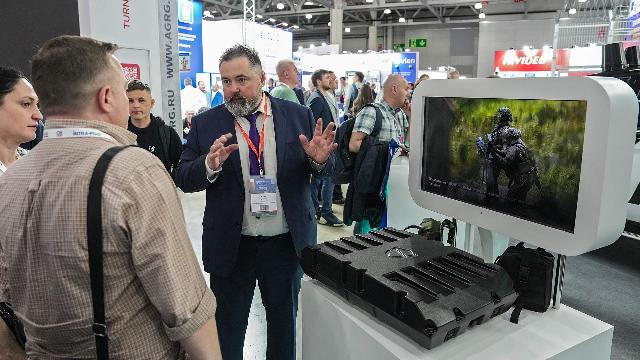Securika Moscow 2025 presents a wide range of solutions for combating enemy UAVs.
Russia has mastered the production of anti-drone protection with anti-shatter panels for industrial enterprises. It protects the most important facilities and personnel of enterprises from the effects of an explosion of a warhead, as well as from the effects of its damaging elements. Several Russian energy facilities are already equipped with such structures. You can get acquainted with the latest innovations in the field of combating UAVs at the Securika Moscow 2025 exhibition.
Anti-shattering contours
The Crocus Expo exhibition center is crowded. The large hall is filled with men in suits who expertly review new developments in the field of combating UAVs, fire fighting equipment and special equipment that protects industrial facilities. The stand of the CeSIS scientific and production association, which has developed passive protection against drones, is of great interest.
— In the border regions, there are a large number of applications from companies of the fuel and energy complex and power engineers to protect facilities from UAV attacks. — says Denis Semin, Director of the scientific and production division of the NGO CeSIS. — A considerable part of these enterprises are critically important, their damage can lead to serious consequences. It is for such objects that passive protection against drones has been developed.
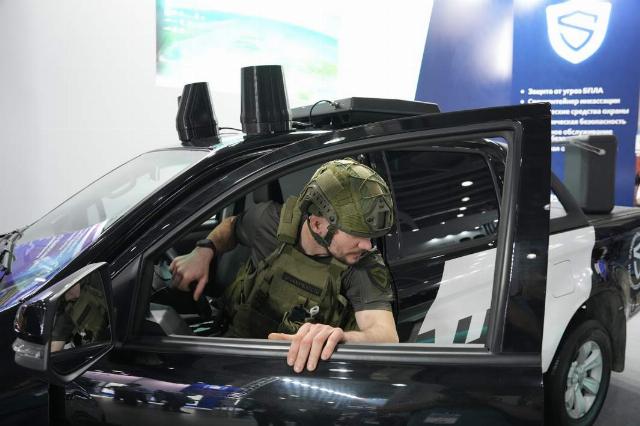
Photo: IZVESTIA/Dmitry Korotaev
Image source: iz.ru
Each enterprise protection project is individual.
— A lot depends on the terrain, the configuration of buildings, buildings, — explains Semin. — This technology allows you to close entire industrial enterprises.
The structure itself consists of supporting columns forming a polygon, the number of sides of which depends on the configuration of the object. Metal trusses are installed on them to cover the object from above. A system of ropes or special nets is stretched over this frame — their task is to stop the UAV.
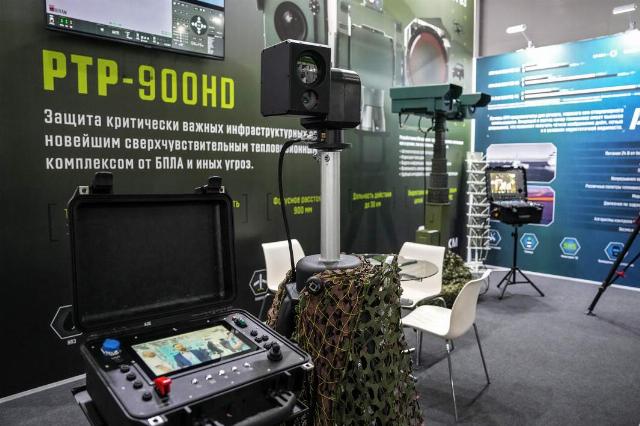
Thermal imaging security system TR-900HD at the Securika Moscow 2025 International Exhibition
Image source: Photo: IZVESTIA/Dmitry Korotaev
If desired, the customer can reinforce this structure with removable shatterproof mesh panels "Swallowtail practice".
— They are four-layered, made of a special material, — Denis Semin explained. — The main task is to extinguish the momentum of the fragments and not allow them to fly apart purposefully. The protection itself is sectional, meaning all its elements are interchangeable. Due to this, its repair after the UAV attack can be carried out in the shortest possible time.
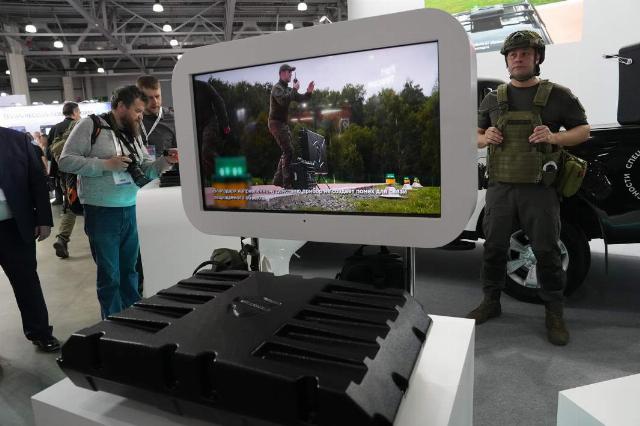
Photo: IZVESTIA/Dmitry Korotaev
Image source: iz.ru
According to him, such protection will not allow quadrocopters and aircraft-type UAVs weighing up to 200 kg to break through to the object and minimize the consequences of an explosion of a warhead weighing up to 30 kg in TNT equivalent.
Several facilities have already received new anti—fragmentation protection, in particular, one of the electrical substations in the Ryazan region.
— Do not forget that we manufacture passive protection, — said Denis Semin. — First of all, enemy drones must meet and destroy air defense systems, electronic warfare and calculations with firearms.
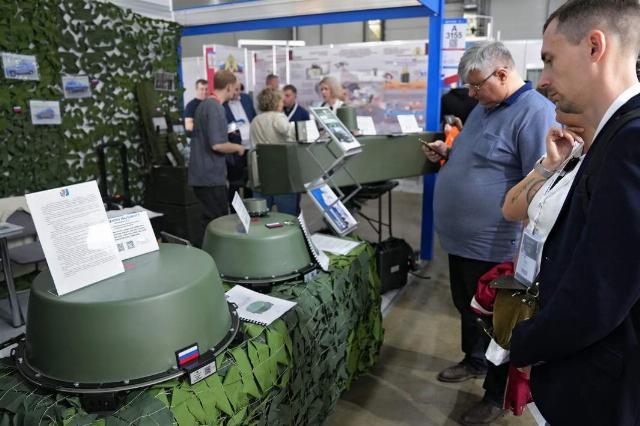
Photo: IZVESTIA/Dmitry Korotaev
Image source: iz.ru
Combined protection can effectively protect an object from fragmentation damage, military expert Dmitry Kornev told Izvestia.
"The additional use of a grid and a rope system, that is, the use of an integrated approach, is absolutely correct," he said. — But in order to "wrap" a nine-story office building, you will need as much mesh protection as you need for 100 armored vehicles. How much can such a solution be budgetary? Question. It is much more effective to destroy drones before they start exploding, so it is better to build a competent air defense system. But it is clear that it is impossible to build such air defense domes everywhere, and then, of course, the use of such protection will be effective.
The Vigilant Solaris
Electronic warfare systems were also widely presented at the exhibition. In particular, the joint—stock company Concern Constellation (part of the Roselektronika holding of the Rostec State Corporation) showed the Solaris-O UAV detection system and the Solaris—N anti-drone system. The latter of them can suppress drone radio control channels, as well as the signal of global positioning systems, such as GPS. Moreover, it does this within a radius of up to 5 km.
"Several such complexes, working in conjunction, provide all—round protection for a large enterprise," the representatives of the concern explain.
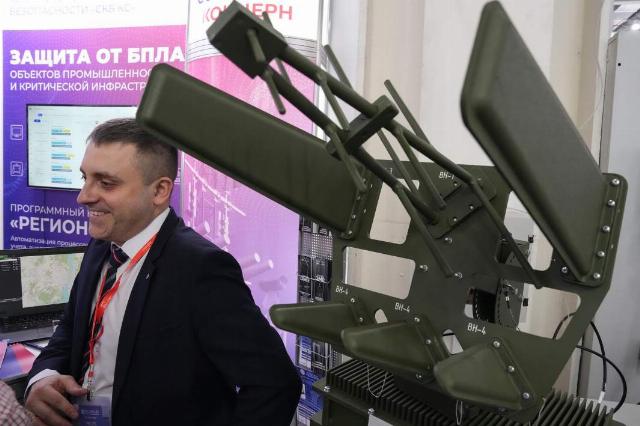
The Solaris-N UAV counteraction and Suppression system at the Securika Moscow 2025 International Exhibition
Image source: Photo: IZVESTIA/Dmitry Korotaev
The Special Control Technologies company showed an electronic warfare system equipped with magnets, which allows it to be fixed on the roof or on the trunk of a car without using special fasteners. It is important that due to its directional action, the device does not interfere with communication in the car interior. It usually stops working after the electronic warfare system is turned on.
— The new electronic warfare system forms a dome up to 500 m, — Mikhail Marakh, the head of the company's department, told Izvestia. — Of course, it depends on the area and weather conditions. For example, during rain or fog, the signal weakens because reflective surfaces appear. But she will not let the enemy's UAV get closer than 300 m, unless, of course, it is controlled by optical fiber. Development is in high demand.
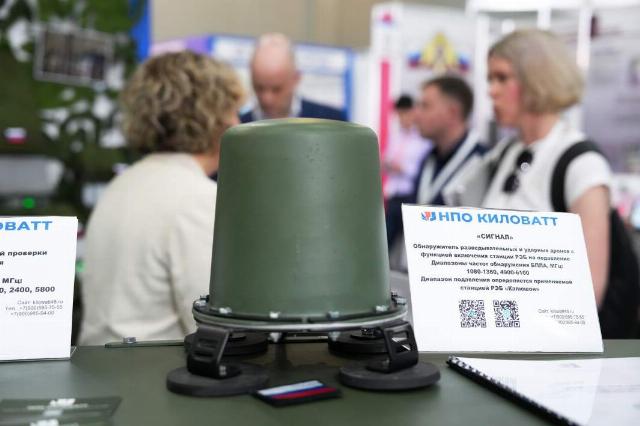
A reconnaissance and attack drone detector with the function of turning on an electronic warfare station for suppression at the Kilowatt NPO stand at the Securika Moscow 2025 international exhibition
Image source: Photo: IZVESTIA/Dmitry Korotaev
And NPO Kilowatt presented the latest electronic warfare station "Shtora" K-12/700 to counter drones. The range ranges from 2.5 km to 5 km, depending on the terrain, said Zhanna Khayredinova, Executive Director of the NGO. The product is designed to protect stationary facilities and personnel from attack, reconnaissance UAVs, as well as from aircraft-type drones. It is actively used in the SVO zone, and the fighters are satisfied with the results.
Our manufacturers of anti-drone systems work in difficult conditions — they have to resist the UAVs that are made or developed in many countries of the world. In the confrontation with them, experience is gained and a school is being created, the developers explain their successes.
Bogdan Stepovoy
Julia Leonova
